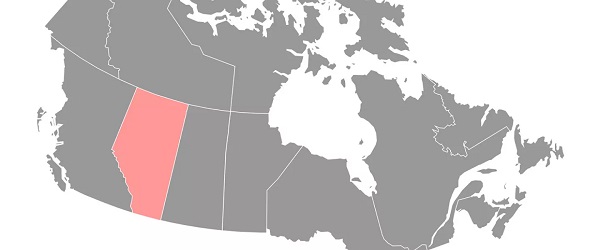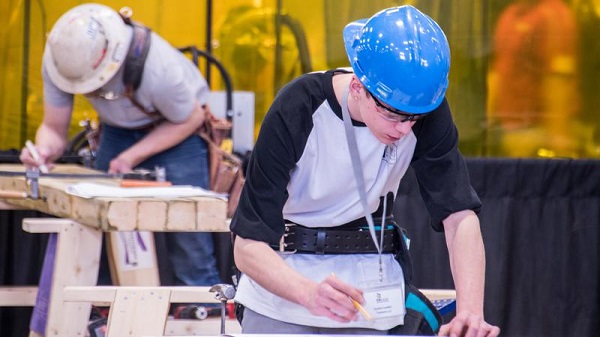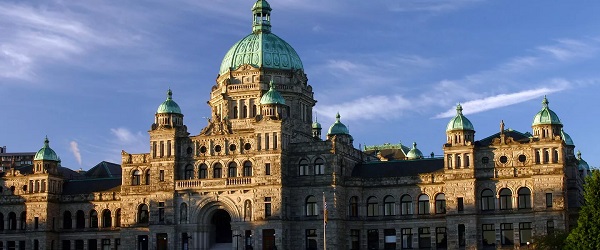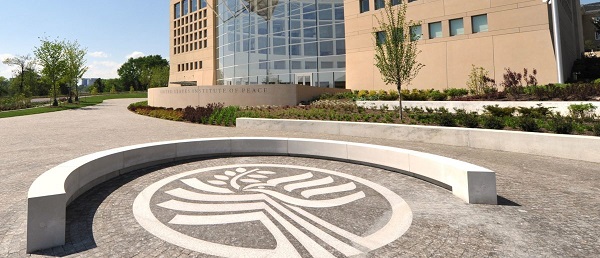Alberta
The way forward for energy development? Cenovus commits to building hundreds of homes in communities closest to their oil sands operations

From Cenovus Energy
Our Indigenous Housing program, the largest community investment initiative in Cenovus’s history, is aimed at addressing one of the most pressing issues facing Indigenous communities in Canada – the lack of adequate housing that is forcing many families to live in overcrowded and unsafe conditions.
The program involves a plan to commit $10 million per year for at least five years to build much-needed new homes in six First Nations and Métis communities closest to our oil sands operations in northern Alberta, with the potential to extend the project to 10 years. We see this initiative as an important way to contribute to reconciliation with Indigenous peoples.
We also plan to work with the communities to develop training programs, so that local residents can participate in the building and maintenance of the new homes.
The communities that are part of this program are:
- Beaver Lake Cree Nation
- Chard Métis (Local 218)
- Chipewyan Prairie Dene First Nation
- Cold Lake First Nations
- Conklin Métis (Local 193)
- Heart Lake First Nation
More information including comments from the surrounding communities
Cenovus to help address Indigenous housing crisis in northern Alberta
Project aims to provide about 200 new homes as well as jobs and training opportunities
Cenovus Energy Inc. has launched a major initiative aimed at addressing one of the most pressing issues facing Indigenous communities in Canada – the lack of adequate housing that is forcing many families to live in overcrowded and unsafe conditions. Cenovus is committing $10 million per year for five years to build much-needed new homes in six First Nations and Métis communities closest to its oil sands operations in northern Alberta, with the potential to extend the project to 10 years. The company sees this initiative as an important way to contribute to reconciliation with Indigenous peoples.
“Investing in Indigenous communities near our operations and ensuring they share in the benefits of resource development has always been part of how we do business. Today, we see an opportunity to step up and do more,” said Alex Pourbaix, Cenovus President & Chief Executive Officer. “We can’t solve the Indigenous housing crisis by ourselves, but through this initiative, we have the opportunity to significantly improve the lives of many families currently living in overcrowded and unsafe conditions.”
Developed as part of Cenovus’s recent 10th anniversary celebration, the housing initiative is the single largest community investment in the company’s history. It’s a testament to the strong positive relationships Cenovus has built over many years working with Indigenous communities near its Christina Lake and Foster Creek oil sands projects. Cenovus has met with leaders from Beaver Lake Cree Nation, Chard Métis (Local 218), Chipewyan Prairie Dene First Nation, Cold Lake First Nations, Conklin Métis (Local 193) and Heart Lake First Nation to begin planning the implementation of the housing program starting this year.
Cenovus plans to work with leaders from the six communities to determine the most effective ways of delivering new homes based on the specific needs of each community. It’s anticipated the communities will be able to build about 200 new houses in total over five years. Cenovus will also work with the communities to develop training programs, so that local residents can participate in the building and maintenance of the new homes. This will potentially create valuable education and employment opportunities for them in the long term. Depending on the success of the initiative, including meeting Cenovus’s performance expectations, the company may consider extending the program to 10 years with a total investment amount of $100 million.
“In addition to creating training and employment opportunities and funding the construction of new houses, Cenovus will also work with communities to raise awareness about the Indigenous housing shortage and help advocate for solutions,” said Pourbaix. “Communities have done an admirable job in managing their housing with limited resources. But this is a complex issue that will require new ideas and collaboration among many stakeholders. We hope to inspire other companies, governments and organizations to get involved.”
Separately, Cenovus has engaged its Indigenous Inclusion Advisory Committee, created in 2017 and comprised of senior leaders from various company functions, to help increase Indigenous inclusion in the company’s business. Since its inception in 2009, Cenovus has signed nine long-term benefits agreements with Indigenous communities near its oil sands operations and spent almost $3 billion with Indigenous owned and operated businesses. On January 9, 2020, Cenovus announced ambitious new targets in four environmental, social and governance (ESG) focus areas, including Indigenous engagement, climate & greenhouse gas emissions, land & wildlife, and water stewardship. A significant element of the Indigenous engagement ESG target commits Cenovus to spend at least an additional $1.5 billion with Indigenous businesses through 2030. Cenovus also continues to provide scholarships to Indigenous youth who are pursuing a full-time degree, diploma or certified trade program. More than 190 scholarships have been awarded since the Indigenous scholarship program started in 2013.
Shirley Paradis, Councillor, Beaver Lake Cree Nation
“Beaver Lake Cree Nation has always had housing issues. We’re at a capacity where we are trying to keep up with families’ needs. The most crucial thing is understanding that we have help now. Cenovus is stepping forward and saying: ‘We’re here to help, how do we help your community?’ There is going to be a sigh of relief for us.”
Justin Herman, CEO, Chard Métis (Local 218)
“What I am taking away from Cenovus’s announcement about the new housing initiative – it’s absolutely amazing and groundbreaking, and I hope it sets a precedent for the rest of the industry to follow the lead of Cenovus. We are excited and honoured to be part of this housing initiative.”
Vern Janvier, Chief, Chipewyan Prairie Dene First Nation
“We’re getting to the point where we have two families living in one house, and in some cases three. On top of the houses that are in disrepair, we have demand for another 50 houses. That’s how it builds up on us. And that’s just our reserve.”
Roger Marten, Chief, Cold Lake First Nations
“We have about 3,000 band members and only 300 homes. So, the crisis is always there and is always ongoing. The relationship has always been a great one with Cenovus; they have always listened and try to do the best they can to help us along the way.”
Val Quintal, Board member, Conklin Resource Development Advisory Committee, representing Conklin Métis (Local 193)
“Housing is a critical need for Conklin, and we are so pleased that Cenovus has come forward to help our community address this issue.”
Curtis Monias, Chief, Heart Lake First Nation
“I am really excited for Heart Lake. I look forward to working with all the surrounding communities, with industry, and I’m excited to build homes back home for my people.”
2025 Federal Election
Next federal government should recognize Alberta’s important role in the federation

From the Fraser Institute
By Tegan Hill
With the tariff war continuing and the federal election underway, Canadians should understand what the last federal government seemingly did not—a strong Alberta makes for a stronger Canada.
And yet, current federal policies disproportionately and negatively impact the province. The list includes Bill C-69 (which imposes complex, uncertain and onerous review requirements on major energy projects), Bill C-48 (which bans large oil tankers off British Columbia’s northern coast and limits access to Asian markets), an arbitrary cap on oil and gas emissions, numerous other “net-zero” targets, and so on.
Meanwhile, Albertans contribute significantly more to federal revenues and national programs than they receive back in spending on transfers and programs including the Canada Pension Plan (CPP) because Alberta has relatively high rates of employment, higher average incomes and a younger population.
For instance, since 1976 Alberta’s employment rate (the number of employed people as a share of the population 15 years of age and over) has averaged 67.4 per cent compared to 59.7 per cent in the rest of Canada, and annual market income (including employment and investment income) has exceeded that in the other provinces by $10,918 (on average).
As a result, Alberta’s total net contribution to federal finances (total federal taxes and payments paid by Albertans minus federal money spent or transferred to Albertans) was $244.6 billion from 2007 to 2022—more than five times as much as the net contribution from British Columbians or Ontarians. That’s a massive outsized contribution given Alberta’s population, which is smaller than B.C. and much smaller than Ontario.
Albertans’ net contribution to the CPP is particularly significant. From 1981 to 2022, Alberta workers contributed 14.4 per cent (on average) of total CPP payments paid to retirees in Canada while retirees in the province received only 10.0 per cent of the payments. Albertans made a cumulative net contribution to the CPP (the difference between total CPP contributions made by Albertans and CPP benefits paid to retirees in Alberta) of $53.6 billion over the period—approximately six times greater than the net contribution of B.C., the only other net contributing province to the CPP. Indeed, only two of the nine provinces that participate in the CPP contribute more in payroll taxes to the program than their residents receive back in benefits.
So what would happen if Alberta withdrew from the CPP?
For starters, the basic CPP contribution rate of 9.9 per cent (typically deducted from our paycheques) for Canadians outside Alberta (excluding Quebec) would have to increase for the program to remain sustainable. For a new standalone plan in Alberta, the rate would likely be lower, with estimates ranging from 5.85 per cent to 8.2 per cent. In other words, based on these estimates, if Alberta withdrew from the CPP, Alberta workers could receive the same retirement benefits but at a lower cost (i.e. lower payroll tax) than other Canadians while the payroll tax would have to increase for the rest of the country while the benefits remained the same.
Finally, despite any claims to the contrary, according to Statistics Canada, Alberta’s demographic advantage, which fuels its outsized contribution to the CPP, will only widen in the years ahead. Alberta will likely maintain relatively high employment rates and continue to welcome workers from across Canada and around the world. And considering Alberta recorded the highest average inflation-adjusted economic growth in Canada since 1981, with Albertans’ inflation-adjusted market income exceeding the average of the other provinces every year since 1971, Albertans will likely continue to pay an outsized portion for the CPP. Of course, the idea for Alberta to withdraw from the CPP and create its own provincial plan isn’t new. In 2001, several notable public figures, including Stephen Harper, wrote the famous Alberta “firewall” letter suggesting the province should take control of its future after being marginalized by the federal government.
The next federal government—whoever that may be—should understand Alberta’s crucial role in the federation. For a stronger Canada, especially during uncertain times, Ottawa should support a strong Alberta including its energy industry.
Alberta
Province announces plans for nine new ‘urgent care centres’ – redirecting 200,000 hospital visits

Expanding urgent care across Alberta
If passed, Budget 2025 includes $17 million in planning funds to support the development of urgent care facilities across the province.
As Alberta’s population grows, so does the demand for health care. In response, the government is making significant investments to ensure every Albertan has access to high-quality care close to home. Currently, more than 35 per cent of emergency department visits are for non-life-threatening conditions that could be treated at urgent care centres. By expanding these centres, Alberta’s government is enhancing the health care system and improving access to timely care.
If passed, Budget 2025 includes $15 million to support plans for eight new urgent care centres and an additional $2 million in planning funds for an integrated primary and urgent care facility in Airdrie. These investments will help redirect up to 200,000 lower-acuity emergency department visits annually, freeing up capacity for life-threatening cases, reducing wait times and improving access to care for Albertans.
“More people are choosing to call Alberta home, which is why we are taking action to build capacity across the health care system. Urgent care centres help bridge the gap between primary care and emergency departments, providing timely care for non-life-threatening conditions.”
“Our team at Infrastructure is fully committed to leading the important task of planning these eight new urgent care facilities across the province. Investments into facilities like these help strengthen our communities by alleviating strains on emergency departments and enhance access to care. I am looking forward to the important work ahead.”
The locations for the eight new urgent care centres were selected based on current and projected increases in demand for lower-acuity care at emergency departments. The new facilities will be in west Edmonton, south Edmonton, Westview (Stony Plain/Spruce Grove), east Calgary, Lethbridge, Medicine Hat, Cold Lake and Fort McMurray.
“Too many Albertans, especially those living in rural communities, are travelling significant distances to receive care. Advancing plans for new urgent care centres will build capacity across the health care system.”
“Additional urgent care centres across Alberta will give Albertans more options for accessing the right level of care when it’s needed. This is a necessary and substantial investment that will eventually ease some of the pressures on our emergency departments.”
The remaining $2 million will support planning for One Health Airdrie’s integrated primary and urgent care facility. The operating model, approved last fall, will see One Health Airdrie as the primary care operator, while urgent care services will be publicly funded and operated by a provider selected through a competitive process.
“Our new Airdrie facility, offering integrated primary and urgent care, will provide same-day access to approximately 30,000 primary care patients and increase urgent care capacity by around 200 per cent, benefiting the entire community and surrounding areas. We are very excited.”
Alberta’s government will continue to make smart, strategic investments in health facilities to support the delivery of publicly funded health programs and services to ensure Albertans have access to the care they need, when and where they need it.
Budget 2025 is meeting the challenge faced by Alberta with continued investments in education and health, lower taxes for families and a focus on the economy.
Quick facts
- The $2 million in planning funds for One Health Airdrie are part of a total $24-million investment to advance planning on several health capital initiatives across the province through Budget 2025.
- Alberta’s population is growing, and visits to emergency departments are projected to increase by 27 per cent by 2038.
- Last year, Alberta’s government provided $8.4 million for renovations to the existing Airdrie Community Health Centre.
Related information
-

 Alberta2 days ago
Alberta2 days agoProvince announces plans for nine new ‘urgent care centres’ – redirecting 200,000 hospital visits
-

 Health2 days ago
Health2 days agoRFK Jr. Drops Stunning Vaccine Announcement
-

 Alberta2 days ago
Alberta2 days agoProvince pumping $100 million into Collegiates and Dual-Credit hands-on learning programs
-

 Fraser Institute2 days ago
Fraser Institute2 days agoPremier Eby seeks to suspend democracy in B.C.
-

 J.D. Tuccille2 days ago
J.D. Tuccille2 days agoSignal Chat Controversy Is an Endorsement of Encryption Software
-

 Alberta2 days ago
Alberta2 days agoPhoto radar to be restricted to School, Playground, and Construction Zones as Alberta ends photo radar era
-

 Business2 days ago
Business2 days agoAmericans rallying behind Trump’s tariffs
-

 Health1 day ago
Health1 day agoArkansas approves ivermectin for purchase without prescription









